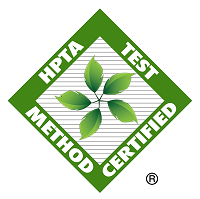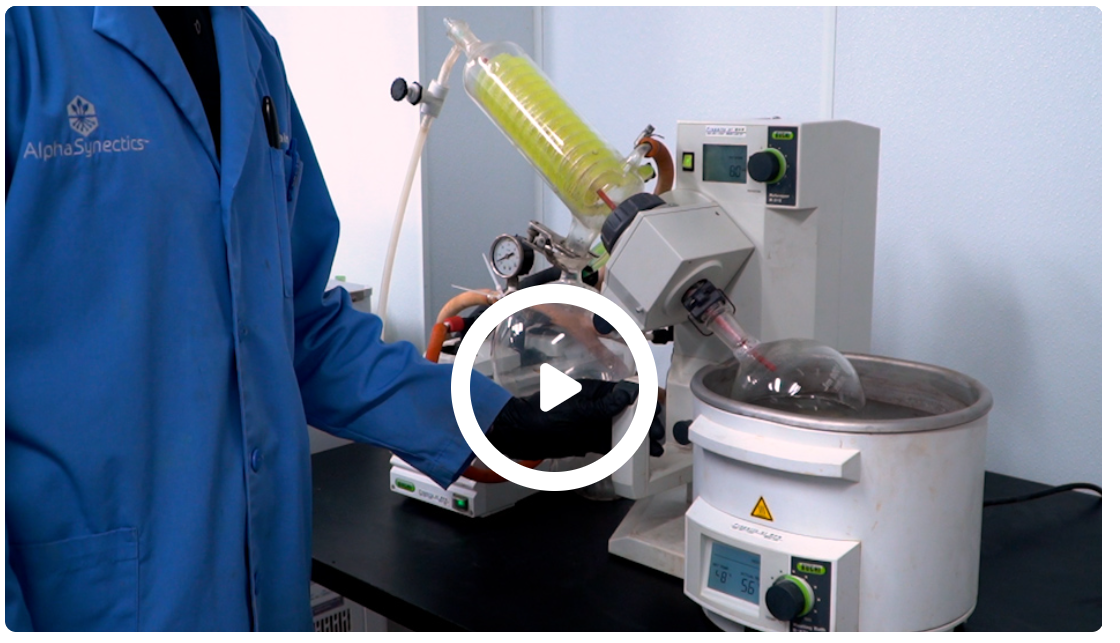
ISO 19822:2018 as the new standard for the determination of humic and hydrophobic fulvic acids concentrations in fertilizer materials.
Humic and fulvic acid are terms which do not refer to discrete chemical compounds or molecules, but to their solubility in aqueous solutions at different pH (alkaline to acidic conditions). While humic acids are soluble in alkaline conditions only, fulvic acids are soluble as well in alkaline as in acidic conditions. The fraction staying insoluble even under alkaline conditions is called humin. So the different fractions of humic substances are just operationally defined.
This varying solubility of the different humic fractions can be explained by the different ratios of (hydrophylic) functional groups to the (hydrophobic) core carbon networks of humin, humic acids and fulvic acids. While the (insoluble) humin fraction consists of very large macro molecules of up to several hundred daltons, the highly soluble fulvic acids show a relative small molecule size of mostly just several hundred daltons.
As there is no definable molecule structure for humic substances there are only indirect methods available for the determination of the content of humic and fulvic acids. Early attempts for the determination humic substances were based on colorimetric methods, presuming that the dissolved organic carbon carbon causing the different intensities of the brown color in waters referred to different concentrations (dissolved) humic substances. For this reason standards like the Aldrich humic acids were used for the preparation of a standard to compare this with the concerned sample. Next to the problem that the brown color cannot only be caused by humic substances, but also by non-humified matter like lignosulfonates or molasses, this method can’t distinguish between humic and fulvic acids.
Subsequent analytical approaches like the standard of the California Department of Food and Agriculture (CDFA) concentrated on the gravimetric determination of humic acids based on their definition as soluble under alkaline, but insoluble in acidic conditions fraction of humic substances. But as the CDFA method only refers to the precipitable fraction by its principles it is only applicable for the determination humic acids. In addition this gravimetric method does not take into account that the precipitate of humic acids under acidic conditions may consist not only of (organic) humic acids but also of varying inorganic moieties like clay due to the very stable clay-humus-complexes in humic substances which are not separated during precipitation.
Another approach specifically for the determination of humic acids in lignites and lignites has been published by ISO/TC 27 Coal and Coke under the name ISO 5073 "Lignites and lignites - Determination of humic acids". This approach refers not only to the determination of "free" humic acids extracted with sodium hydroxide, but also to the determination of the total humic acid content by extraction with sodium pyrophosphate. In this method the humic and fulvic acid contents in the extracts are determined only indirectly by determining the organic carbon and subsequent conversion by a factor of 0,59. Since this method does not provide for precipitation of the humic acids, the sum of the humic and fulvic acid contents is practically determined without differentiation. Unfortunately, this standard stipulates that the content of organic carbon is determined by titration with potassium dichromate, which is why this method is now only used by very few laboratories. As an alternative to the time-consuming and health-endangering use of potassium dichromate for the determination of organic carbon in extracts, A. Volikov and I. Perminova propose the use of TOC analyzers ("Express Method of Determining the Humic/Fulvic Acids Ratio in Humic Substances by Total Organic Carbon Analyzer").In view of the intended quality control for humic substances based products, the Humic Products Trade Association (HPTA) initiated the development of a new analytical standard for determining the concentration of humic and hydrophobic fulvic acids in fertilizing products.
Based on the principles of the IHSS (International Humic Substances Society) and the ISO standard 12782-4/-5 (developed by the Dutch soil scientist André van Zomeren and Rob Comans) the Team of Richard T Lamar, Daniel C Olk, Lawrence Mayhew, Paul R Bloom developed the analytical basics for currently valid ISO standard 19822, which came into power in August 2018 by the ISO/TC 134 (Fertilizers, soil conditioners and beneficial substances) and was approved by the Association of American Plant Food Control Officials (AAPFCO) and accepted by the CEN/TC 455 (Plant Biostimulants and Agricultural Micro-Organisms).
However, even if ISO 19822 is a great improvement as it removes the influence of inorganic moieties in humic substances on their quantification, this standard only determines the hydrophobic fraction of fulvic acids, which only amount to a fraction of the total content of fulvic acids. In addition industrial byproducts like lignosulfonates do show a similar behavior to fulvic acids, even though they do not account for humic substances. That’s why ISO 19822 proposes to determine the Sulphur content of the sample to distinguish between lignosulfonates and hydrophobic fulvic acids. In cases of an exceed of 0.75% Sulphur content in the concerned samples, a further characterization by FTIR (Fournier Transform Infrared Spectroscopy) analysis should additionally be applied to confirm the absence of lignosulfonates in the claimed humic product.
Even though the new ISO standard 19822 has certainly limitations with regard of the determination of the total fulvic acids content and is furthermore very labor-intensive it’s currently the most important standard for proving and warranting the quality of humic products. So Humintech as a member of the HPTA is proudly supporting the efforts for a sustainable quality assurance.Link to ISO 19822/ HPTA, click here.



